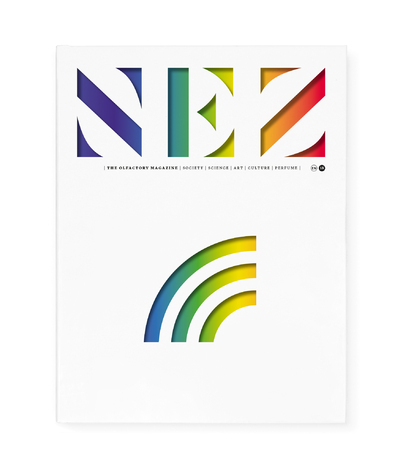
Nez - N° 18 The Olfactory Magazine
"Nuance,' "palette,' "brightness,' but also pink, green, white musks and blonde woods: The vocabulary of painters is readily used to describe smells, and brands themselves often borrow the names of colors to baptize their fragrances, from Bleu by Chanel to Black Opium by Yves Saint Laurent, by way of Dior's Gris Montaigne or Guerlain's Habit rouge.
Sight, the dominant sense in our world, has a considerable influence on our olfactory perception. Some of us even see colors appearing when they smell, and vice versa.
Does this synesthesia have a physiological explanation? In perfume shops and on social media, do certain colors for bottles draw the consumer's attention more than others? How do you manage to maintain a product's color over time? Are there correspondences between the color and the fragrance of a plant in nature? Also, why does the skin or hair color of individuals still arouse prejudices about their odor, and how does it influence their place in the industry? The color of scents tells us much more than what our eyes let on...
